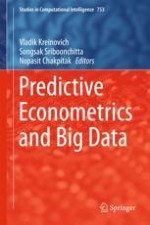2018 | OriginalPaper | Buchkapitel
Does Forecasting Benefit from Mixed-Frequency Data Sampling Model: The Evidence from Forecasting GDP Growth Using Financial Factor in Thailand
verfasst von : Natthaphat Kingnetr, Tanaporn Tungtrakul, Songsak Sriboonchitta
Erschienen in: Predictive Econometrics and Big Data
Aktivieren Sie unsere intelligente Suche, um passende Fachinhalte oder Patente zu finden.
Wählen Sie Textabschnitte aus um mit Künstlicher Intelligenz passenden Patente zu finden. powered by
Markieren Sie Textabschnitte, um KI-gestützt weitere passende Inhalte zu finden. powered by
